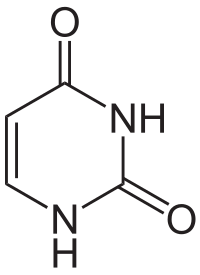
Photo from wikipedia
A new fused-chrysene electron-donating core is synthesized, where chrysene is condensed with two thiophenes via two dihydrobenzene rings. Based on this building block coupled with 2 electron-accepting end groups 1,1-dicyanomethylene-3-indanone,… Click to show full abstract
A new fused-chrysene electron-donating core is synthesized, where chrysene is condensed with two thiophenes via two dihydrobenzene rings. Based on this building block coupled with 2 electron-accepting end groups 1,1-dicyanomethylene-3-indanone, a new Z-shaped fused-ring electron acceptor, FCIC, is designed and synthesized. FCIC shows intense absorption in 500-850 nm region, with a maximum molar absorptivity of 1.5 × 105 M-1 cm-1, a bandgap of 1.50 eV, and a charge mobility of 2.5 × 10-4 cm2 V-1 s-1. The ternary organic photovoltaic cells based on PTB7-Th/F8IC/FCIC yield an efficiency of 12.6%, higher than that of the binary cells of PTB7-Th/F8IC (10.7%) and PTB7-Th/FCIC (7.21%). Relative to the PTB7-Th/F8IC binary blend, the addition of FCIC leads to improvement in the open-circuit voltage, short-circuit current and fill factor.
Journal Title: ACS applied materials & interfaces
Year Published: 2019
Link to full text (if available)
Share on Social Media: Sign Up to like & get
recommendations!